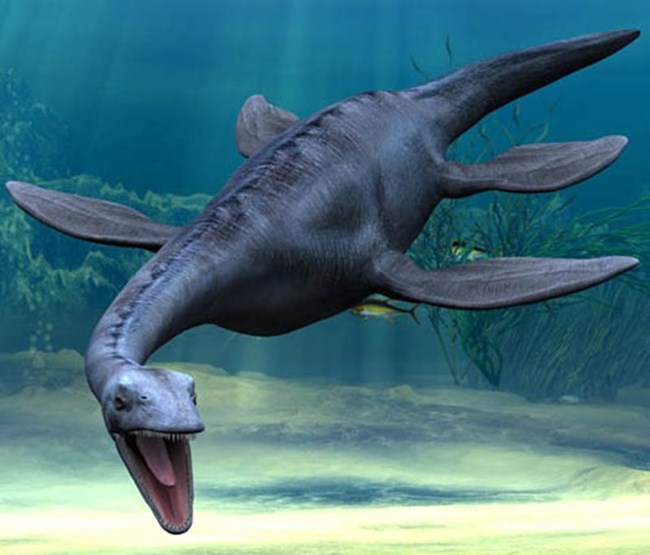
By Siobhan Niklasson
We’re familiar with the climate of New Mexico as it is now, but the climate of this part of the world hasn’t always been the same!
The primary variable controlling climate on Earth is the amount of carbon dioxide in the atmosphere. When there’s more carbon dioxide, the atmosphere can trap more of the sun’s heat, and when there’s less carbon dioxide, more of the sun’s heat is reflected back into space. It’s like using different blankets at night: some are warmer than others.
The total amount of carbon on Earth is pretty much constant, but it’s not all in the atmosphere. Carbon can also be stored in rocks, in the ocean, or in living things. So the balance of carbon between the atmosphere and other reservoirs is what determines the warmth of our atmospheric blanket. You can think of it this way: sometimes you might have a lot of blankets on your bed, and sometimes they might be folded up and stored in the closet.
During the Cretaceous period (145 – 66 million years ago), the global climate on Earth was warmer than it is now. The supercontinent Pangea had started to break up, and the volcanic activity that accompanied this breakup moved lots of carbon from the rocks into the atmosphere. Because of the warm temperatures, the sea level was higher than it is now, and the divided land masses allowed warm ocean currents to carry heat all around the globe.
In fact, during this period, a shallow sea stretched north to south across all of what is now North America. The western part of New Mexico was a low-lying coastline with huge rivers and dense jungle vegetation. The central and eastern parts of New Mexico were under water.
Imagine being right here in New Mexico during the late Cretaceous period: you’d be swimming in a warm, shallow sea, with oysters clustering on surfaces. Ammonites, spiral-shelled creatures related to octopuses, would be swimming by. A variety of bony fish and sharks shared the waters. Reptiles, including sea turtles, plesiosaurs, flying pterosaurs, and the giant apex predators, mosasaurs, swam and hunted here too. We can see examples of each of these animals in Cretaceous-age fossil finds from New Mexico.
The Cretaceous period marked the last time that New Mexico was underwater. During the Tertiary period following it (66 – 2.6 million years ago), the Rocky Mountains were uplifted, and the climate on the globe cooled significantly, as excess carbon was stored in fossil fuels and limestone rocks, and ocean currents changed to create distinct climate zones from the poles to the tropics. So our underwater past is now apparent only in the fossil record.
Currently, human activity is moving carbon from geologic storage into the atmosphere again, primarily through the excavation and burning of fossil fuels. Carbon dioxide levels are rising in the atmosphere, and we’re seeing a rapid increase in temperature. We know from our geologic history that different climates favor different assemblages of organisms, so it remains to be seen how our natural and human communities will change in response to today’s changing climate.
